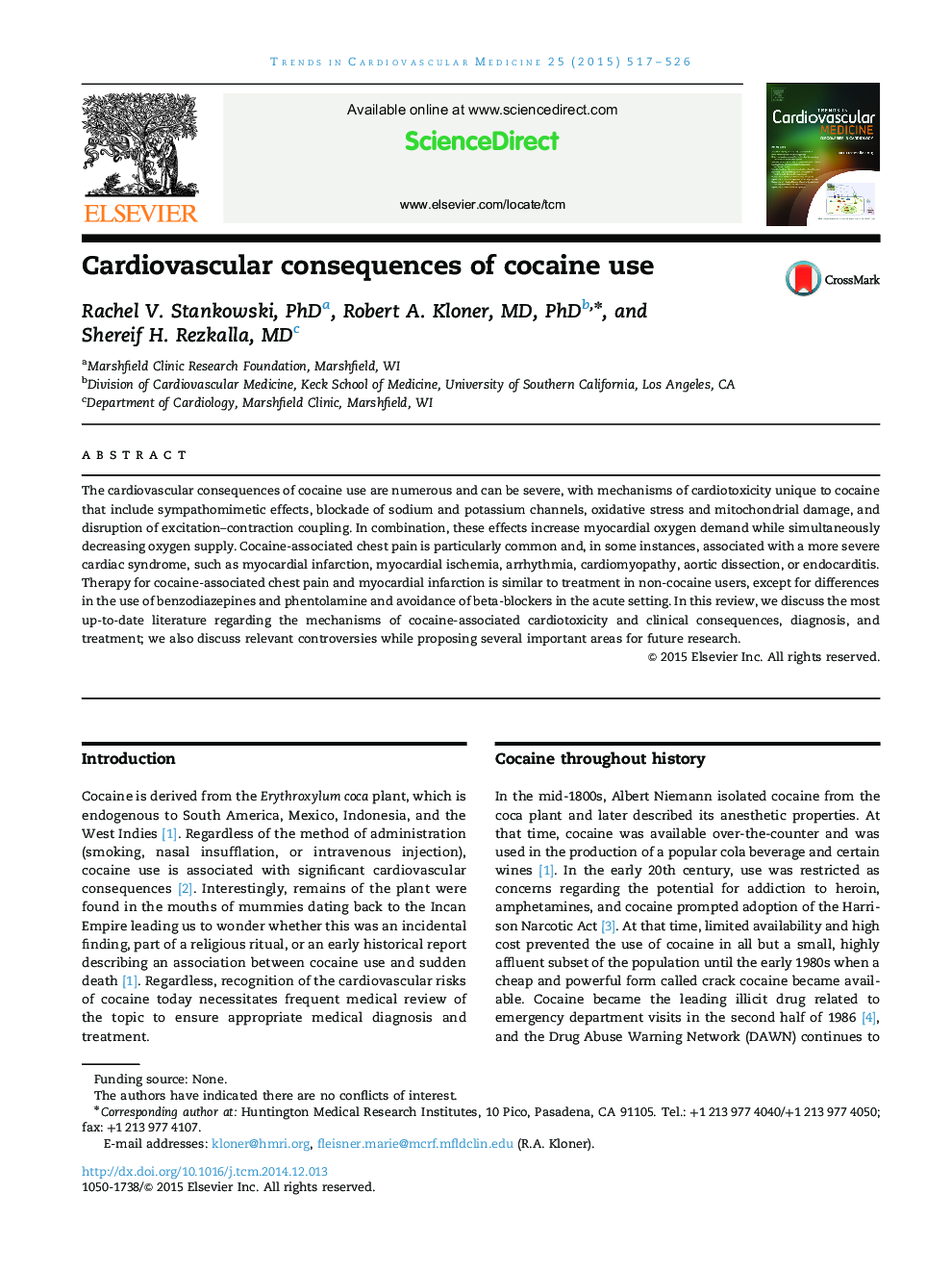| Article ID | Journal | Published Year | Pages | File Type |
|---|---|---|---|---|
| 3030815 | Trends in Cardiovascular Medicine | 2015 | 10 Pages |
The cardiovascular consequences of cocaine use are numerous and can be severe, with mechanisms of cardiotoxicity unique to cocaine that include sympathomimetic effects, blockade of sodium and potassium channels, oxidative stress and mitochondrial damage, and disruption of excitation–contraction coupling. In combination, these effects increase myocardial oxygen demand while simultaneously decreasing oxygen supply. Cocaine-associated chest pain is particularly common and, in some instances, associated with a more severe cardiac syndrome, such as myocardial infarction, myocardial ischemia, arrhythmia, cardiomyopathy, aortic dissection, or endocarditis. Therapy for cocaine-associated chest pain and myocardial infarction is similar to treatment in non-cocaine users, except for differences in the use of benzodiazepines and phentolamine and avoidance of beta-blockers in the acute setting. In this review, we discuss the most up-to-date literature regarding the mechanisms of cocaine-associated cardiotoxicity and clinical consequences, diagnosis, and treatment; we also discuss relevant controversies while proposing several important areas for future research.
